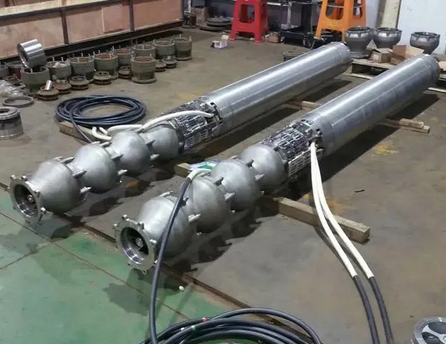Principles for selecting pumps on offshore drilling platforms
The selection principles of pumps on offshore drilling platforms involve multiple aspects to ensure that the pumps can operate efficiently, stably and safely in complex and harsh marine environments. The following are specific selection principles:
1. Meet process requirements
Flow and head: According to the process design requirements of the drilling platform, select a pump type that can meet the required flow and head. This is the basic starting point for pump selection to ensure that the pump can operate normally under rated conditions.
Adaptability and assurance: Select a pump type with good performance and strong adaptability and assurance with the flow and head changes required by the project. Select a water pump with high efficiency, good suction performance and a wide range of uses in the series of products.
2. Consider environmental factors
Corrosion resistance: Since seawater is highly corrosive, the material of the pump must have good salt and acid corrosion resistance. Key components such as pump body, impeller, guide cover, bearing, etc. should be made of special materials, such as stainless steel (316L, 2205, etc.) or other corrosion-resistant alloys.
Wear resistance: The pump group must also be equipped with a suitable anti-marine biological device to prevent marine biological attachment from causing performance degradation or damage to the pump.
Earthquake resistance: Offshore drilling platforms are often affected by natural forces such as wind, waves, and tides. Pumps should have good earthquake resistance to ensure stable operation in harsh environments.
3. Operation efficiency and economy
High-efficiency zone operation: The selected pump should be operated as close to the design (rated) operating point as possible within its high-efficiency zone. This helps to improve the operating efficiency of the pump and reduce energy consumption and operating costs.
Long-term operating efficiency: The selected pump should maintain a high average device efficiency, low energy consumption, and low operating costs in long-term operation.
Economy: Consider the purchase cost, operating cost, and maintenance cost of the pump and select a pump with high cost performance.
4. Easy to install, operate, and maintain
Easy to install: Due to the limited space on offshore drilling platforms, the pump should be easy to install and arrange to reduce the difficulty and cost of installation.
Ease of operation: The operation of the pump should be simple and easy, reduce the labor intensity of the operator, and improve work efficiency.
Convenience of maintenance: The maintenance and maintenance of the pump should be convenient to reduce downtime and improve equipment utilization.
5. Other considerations
Reliability: The pump should have good reliability, reduce the possibility of failure, and ensure the continuous operation of the drilling platform.
Safety: The design of the pump should comply with relevant safety standards to ensure that it will not cause harm to personnel and equipment during operation.
Environmental protection: The selection of the pump should take environmental factors into consideration to reduce the impact of noise, vibration and wastewater discharge on the environment.





